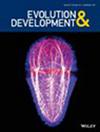Evolution of Slower Development (Early Cell Cycles and Somite Formation) in Teleost Fish That Guard or Hide Eggs
Abstract
Embryos are vulnerable. Rapid development decreases the period of vulnerability. Parents’ protections also decrease vulnerability and may decrease selection for rapid development. A previous study showed that invertebrate embryos with more protection had slower early cell cycles. The slowing varied greatly among species. Hypotheses for the slowing include genetic drift and selection for developmental improvements. Here, published data on teleost fish indicated that (1) guarded and hidden embryos exhibit a similar pattern of varied slowing and (2) the pattern of slowing is similar for early cell cycles (mostly dependent on times for DNA replication and cell division) and somite formation (which also involves transcription and cell signaling). Times for early cell cycles and somite formation were more uniformly fast for teleosts with scattered nonadhesive eggs than for those with guarded or hidden eggs. Some species with adhesive eggs that were not reported to be guarded or hidden also developed slowly, as expected if parents select safe sites for egg attachment. Slower development is expected to increase bias against evolutionary reversals to less protection of embryos. Differences in egg size did not account for slower development of protected embryos. Slow development increased age at hatching but did not account for all the increase in age at hatching of protected embryos. Greater protection of embryos was associated with an evolutionary slowing of developmental processes as simple as early cell multiplication and complex as somite formation, in fish with disparate protections of embryos, in habitats ranging from the ocean to temporary ponds.


 求助内容:
求助内容: 应助结果提醒方式:
应助结果提醒方式:


